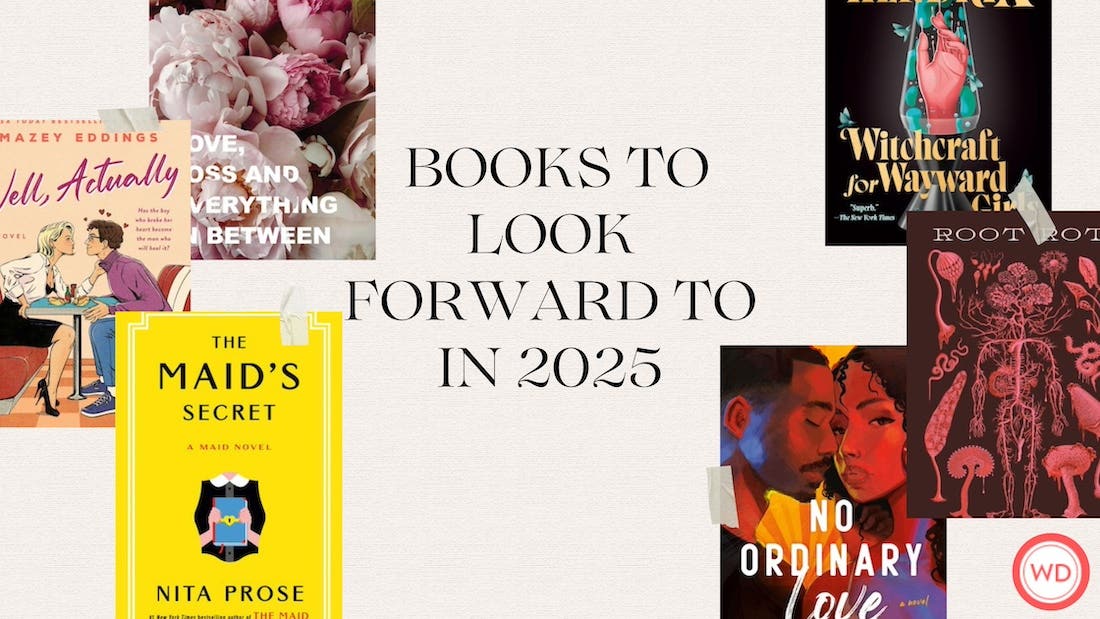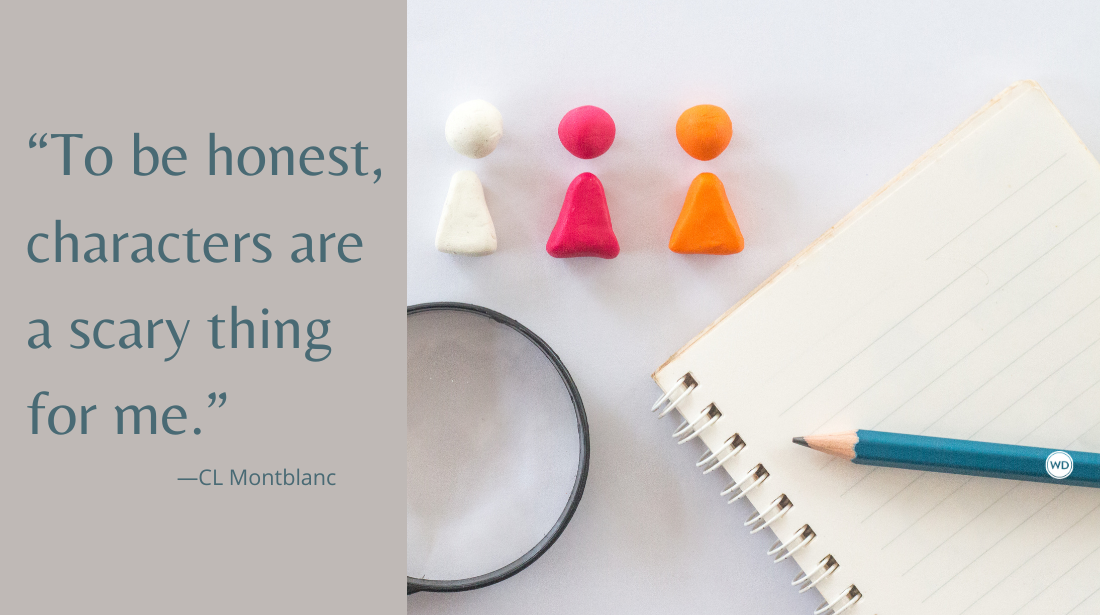Amanda Glaze: Your Characters Will Always Tell You What They Need
In this interview, author Amanda Glaze discusses the real-life spooky story that helped inspire her new young adult paranormal novel, The Lies of Alma Blackwell.
Amanda Glaze is the bestselling author of The Second Death of Edie and Violet Bond, a Barnes & Noble YA Book Club pick. She grew up in Northern California, where she spent most of her time with her nose in a book or putting on plays with friends. Since then, she’s lived many lives: as a bookseller, a theater director, and an Emmy Award–winning film and television producer. When she’s not running off to the mountains, she lives in Los Angeles with her partner and their two cat writing familiars. You can visit her online at AmandaGlaze.com, or follow her on Instagram.
In this interview, Amanda discusses the real-life spooky story that helped inspire her new young adult paranormal novel, The Lies of Alma Blackwell, the perils of writing the second novel, and more.
Name: Amanda Glaze
Literary agent: Sara Crowe
Book title: The Lies of Alma Blackwell
Publisher: Union Square & Co
Release date: August 27, 2024
Genre/category: Young Adult Paranormal/ Fantasy
Previous titles: The Second Death of Edie and Violet Bond
Elevator pitch: A descendant from a long line of witches is poised to inherit the familial responsibility of safeguarding her town from a centuries-old curse, but when a mysterious stranger arrives in town with a dark warning, everything she thought she knew is thrown into question. By following the trail of clues left behind by her most powerful ancestor, she uncovers an unspeakable legacy, and realizes that a stranger may be the one person she can trust.
What prompted you to write this book?
I’ve always been fascinated by a place called The Winchester Mystery House in San Jose, California. It’s a bizarre yet beautiful mansion full of architectural oddities, like staircases that dead-end into ceilings and doors that open onto nothing but air. It was built by a woman named Sara Winchester in the late-1800s. She was the widow of William Winchester who invented the Winchester Rifle, aka “The Rifle That Won the West.”
The story goes that Sara Winchester believed she was being haunted by the souls of those killed by her husband’s rifle, and so she sought the help of a spirit medium who instructed her to build a home for those spirits in order to atone for her family’s sins. But the spirits continued to torment her, which is why she slept in a different bedroom every night and why she built a sprawling maze-like mansion in order to confuse the spirits who stalked her. Another theory is that Sara Winchester was simply an overly ambitious amateur architect, and the reason there are so many curious features in the house—like windows built directly into the floor—can be chalked up to simple poor planning.
We’ll likely never know the real reason Sara built the house in the strange and spooky way she did, and to a writer, that is just too tempting of a mystery. I decided to come up with my own version of what might have happened all of those years ago, and it was from that “what-if” question that the story for what would become The Lies of Alma Blackwell emerged.
How long did it take to go from idea to publication? And did the idea change during the process?
This is an idea that’s been rattling around in my head for some years, but I started thinking seriously about the story and the characters a little over a year and a half ago. I pitched the basic premise to my editor in the Fall of 2022 and began drafting shortly after that. I tend to write messy, exploratory first drafts, so my stories always change a lot in the drafting process, but this book is one that changed quite a bit. The story of what happened over a century ago when Alma Blackwell (my fictional take on Sara Winchester) was alive remained pretty consistent, but the character of Nev, her modern-day descendent, eluded me in the first draft. It wasn’t until the second draft that Nev’s character took solid shape, and from there, I re-envisioned and rewrote the entire modern-day mystery and overall plot. About seven months after beginning the second draft, I turned in the final draft to my editor. The book hits shelves August 27, so overall from the first loose outline to publication, it will be a little under two years.
Were there any surprises or learning moments in the publishing process for this title?
Before I published my first novel, I remember hearing a lot of authors at festivals and conferences talking about how hard it was to write their second book. It’s not that I didn’t believe them, but I did think to myself that surely the second book would be easier because now you know how to do it! And while that’s true in some ways, writing this second book did present some new challenges I hadn’t expected.
For example, it wasn’t until I started querying what would become my debut novel about twin spirit mediums at the turn of the century that people told me the genre of historical fantasy doesn’t sell well, and that it especially doesn’t do well internationally. I’m so glad I didn’t know that because my historical fantasy was not only published, but it’s also been translated into multiple languages. There are a lot of opinions out there—tropes that people like or don’t like, trends that are selling or not selling—and it can be really difficult not to think about that when you write because you want your book to be loved and embraced.
When I wrote my first book, I truly didn’t expect that anyone beyond my friends would ever read it. I had vague hopes that it might get published one day, but mostly I wrote it to please myself. And while I think it’s important to seek out opinions from trusted readers once you’re ready to revise, I think it’s hard to create something you truly love if you are thinking about outside opinions too early in the process. When I started writing this book, I was much more aware of many overall publishing conversations, and I found I had to work harder to shut out the world and get into that mindset where the only thing that matters is creating something that, in the words of the brilliant author Elana K. Arnold, fills you up.
Were there any surprises in the writing process for this book?
My debut novel, The Second Death of Edie and Violet Bond, was written in the POV of close third-person past (aka: She climbs the stairs), and since that’s a POV I love writing in, I naturally wrote the first draft of Alma in third-person past as well. But I eventually realized that something wasn’t working the way I wanted it to, and so, as an experiment, I tried switching up the point-of-view from third-person past to first-person present. So, the narrative voice went from “She climbed the stairs” to “I climb the stairs.
As soon as I made that shift, to my surprise, the voice of the main character revealed herself to me in all her messy, witchy, yearning glory. And that’s how the book went from third-person past in the first draft to first-person present in the second draft. It’s been my experience that your characters will always tell you what they need eventually, you just have to be willing to experiment and listen, and—sometimes—cheerfully rewrite 80 percent of the book if that is what they demand.
What do you hope readers will get out of your book?
I love books that pull you deeper and deeper into their world as you turn the pages, and it’s my hope that readers will be sucked into the mystery and magic surrounding the misty, seaside town of Hollow Cliff. This book is full of secrets and twists and thwarted love, but it’s also very much about the power of our past over our present, which is a theme I hope will resonate with readers. One of the reasons I’m so drawn to studying history is that it reveals so much about why and how we live our lives today. This is true not only of our own personal and family histories, but for our larger cultural history. A simple opinion of a hundred years ago can become a fact we don’t question today. And we must question it. All of it. We must question it deeply.
If you could share one piece of advice with other writers, what would it be?
Read widely—especially in the genre you’re writing in. Find the books that you love and figure out how the author pulled it off. Do they use certain character archetypes you’re drawn to? At what point in the story do they introduce an antagonist or conflict or plot twist? Try making a beat sheet of a book you think is particularly well done and study their plot. Make your best guess at what you think the character wants and motivations are and write out all the ways the author tortured that character until they finally overcame (or didn’t overcome) their flaw/wound/problem. If your character is stuck in a basement and you don’t know how to get them out, read a good book and see how that author got their character out of their basement. The solution you come up with will ultimately suit your story and be from your own brain, but you’ll gain invaluable inspiration by studying other great stories.
Robert Lee Brewer is Senior Editor of Writer's Digest, which includes managing the content on WritersDigest.com and programming virtual conferences. He's the author of 40 Plot Twist Prompts for Writers: Writing Ideas for Bending Stories in New Directions, The Complete Guide of Poetic Forms: 100+ Poetic Form Definitions and Examples for Poets, Poem-a-Day: 365 Poetry Writing Prompts for a Year of Poeming, and more. Also, he's the editor of Writer's Market, Poet's Market, and Guide to Literary Agents. Follow him on Twitter @robertleebrewer.








